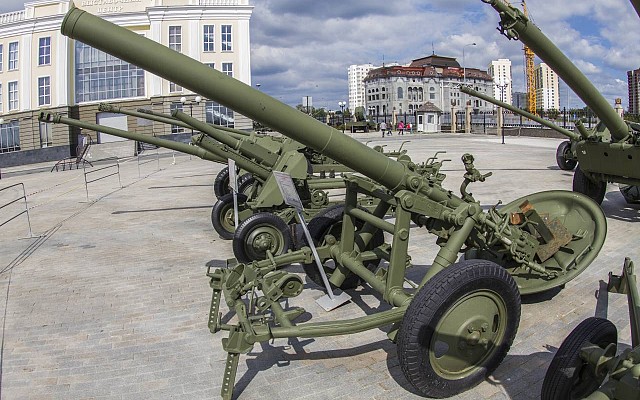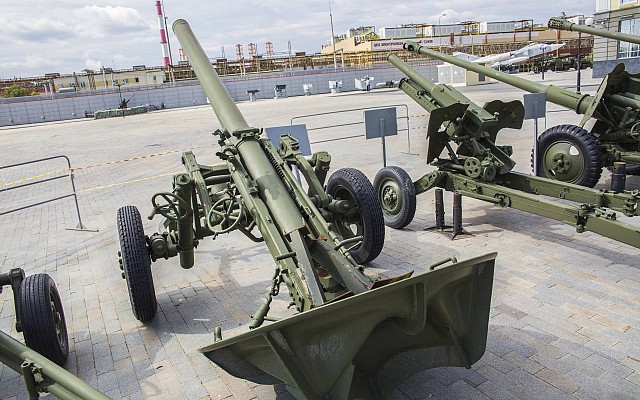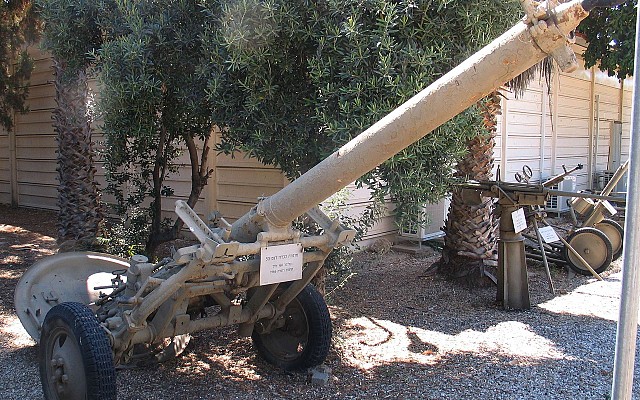160mm M160
Overview
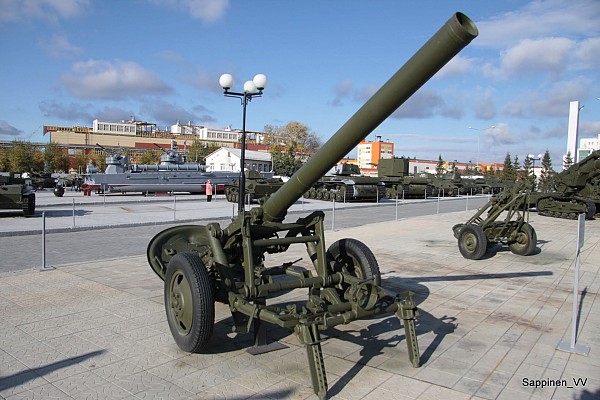
160mm M160
Soviet 160mm M160 heavy mortar on display in a museum. Note the extensive carriage that doubles as a bipod in the firing position.
Source: Vladimir Sappinen -
© GNU Attribution Share Alike license
Soviet Union - Motovilikha (1952 - 1957)
Syria
India
Description
Introduction
The M160 is an early Cold War era heavy mortar of Soviet origin. It was developed just after World War 2 as a more capable successor to the World War 2 era 160-PM-43. The M160 was a more capable design and produced in much larger numbers than its predecessor.
Design
The M160 is a further development of the 160-PM-43 with the main goal of improving the range. This is achieved by a longer barrel firing the 160mm mortar shells at nearly twice the velocity of its predecessor. To cope with the increased recoil the base plate is larger and the recoil mechanism is substantially improved.
Firepower
The 160mm mortar shells weight over 41 kg and are very destructive. High explosive and high explosive fragmentation are the most common ammunition types. The maximum range is 8.040 meters, with the minimum range being 750 meters. The rate of fire is 2 or 3 rounds per minute.
Mobility
The M160 is towed behind a towing vehicle using a lug attached to the muzzle. The towing vehicle is either a large 6x6 truck or a tracked prime mover. The M160 is too heavy to be moved by infantry in the field.
Users
Over 2.300 of these heavy mortars were produced. The majority saw service in the Soviet army. Various states with good ties to the USSR received the M160. The main export user seems to be India with about 500 acquired. Both Egypt and Syria used the M160 in various conflicts. The M160 remain in limited use today.
Details
Media
Related articles
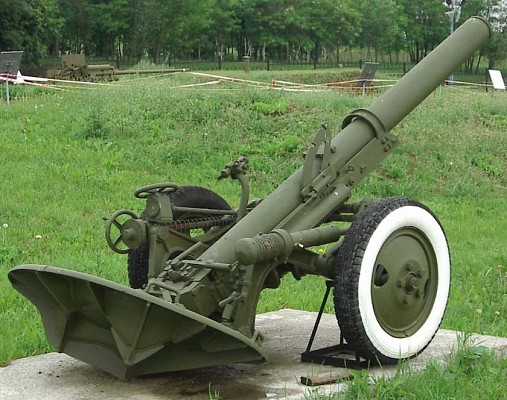
160mm PM-43
The M160 is the more capable successor of the World War 2 era PM-43.
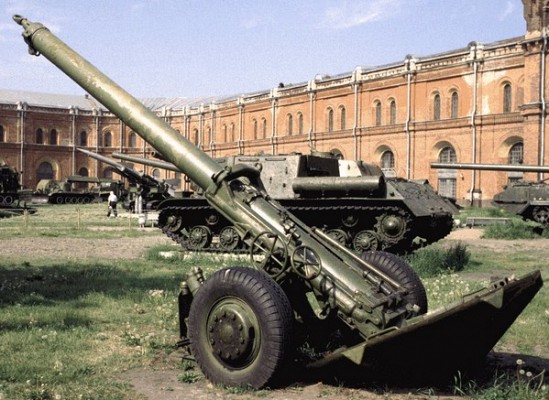
240mm M240
The M240 is an upscaled version of the M160 breech-loading mortar.
The M240 can be identified by its large baseplate and platform for the recoil assembly.
